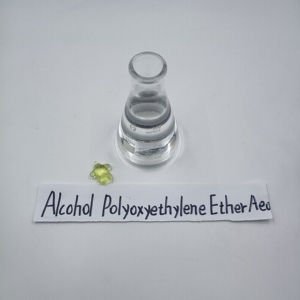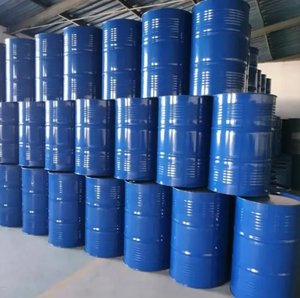
All categories
Featured selections
Trade Assurance
Buyer Central
Help Center
Get the app
Become a supplier

(976 products available)













































Methyl allyl polyether comes in several types. They’re suited for distinct industrial applications and differ in composition, molecular weight, and structure. Below is a list of the common types:
Methyl allyl polyether is often utilized as a binder in coatings. It improves the mechanical properties of resins used in fiberglass. In this case, it adds strength and flexibility. Also, it enhances the durability of many materials.
This type has a molecular weight of less than 1000 daltons. It is commonly used in coatings and adhesives. Its primary role in these industrial set-ups is to enhance gloss and improve the coating's adhesion to surfaces.
Methyl allyl polyether with a molecular weight of more than 1000 daltons is mainly used in tires and textiles. In these spaces, they contribute to improved material properties such as chemical resistance and increased durability.
Methyl-ether modified polyacrylate resins are a type of methyl allyl polyether. They come with enhanced weathering resistance and flexibility. This makes them suitable for outdoor applications. These include protective coatings and sealants.
This type is utilized in papermaking and textile sizing. It improves the retention of fillers and pigments. Also it helps in the strengthening of paper and other textile materials. Cationic methyl allyl polyethers are useful in industries that require effective flocculation and coagulation processes.
This is a less common type. Cyclic methyl allyl polyethers are primarily used for research purposes. Also, they have potential applications in drug delivery systems and molecular recognition due to their selective binding capabilities. This capability may lead to exciting developments in the pharmaceutical and biomedical fields.
Methylallyl polyether is utilized across multiple industries. Here, they capitalize on its functional properties:
Methyl allyl polyether is prominent in the coatings industry due to its ability to improve the adhesion of paints and varnishes to different surfaces. They enhance the durability and gloss of coatings in automotive and industrial applications. These coatings need to be visually appealing and highly durable in order to survive the adverse impacts of wear and tear.
Methyl allyl polyether is utilized to produce fibers with better dye affinity and chemical resistance in textile coatings and finishes. These polyethers serve as binders in textile coatings, giving fabrics a smoother feel and better wear qualities.
Methylally-polyether and its copolymers are used in paper manufacturing to enhance paper strength and improve ink adhesion during printing. They act as cationic polymers in paper production. They improve the retention of fillers, pigments, and additives. In wood products, they act as binders in composite wood materials like particleboard and plywood. They improve the mechanical strength and water resistance of the end products.
Methyl allyl polyether help improve the mechanical properties and chemical resistance of rubber compounds in the tire industry. This improves the longevity and performance of tire inserts and blending. It thus enhances the attributes of the final product.
Methylallyl polyether are also used in the pharmaceutical industry. They aid in the creation of drug delivery systems with controlled release properties. This promotes the bioavailability and efficacy of medicinal compounds. Researchers are also exploring these polyethers in the creation of hydrogels for biomedical applications like tissue engineering and wound repair. Here, the biocompatibility and flexibility of polyethers provides great foundations for cell proliferation and vitality.
Methyl allyl polyether has multiple specifications. They all depend on molecular weight, viscosity, functionality, purity/quality, and application. Here are the specifications:
The quality of methyl allyl polyether in different products varies based on multiple factors. An end-user needs to consider parameters such as the molecular weight of the polymer, the purity of the product, and the distribution of the functional groups within the polymer chains. Also, look for industrial-grade products with a low residual monomer count. High-quality materials must have consistent properties, especially when used in applications that require strict standards, such as automotive or aerospace coatings. They should be flexible enough for coatings but also durable and heat-resistant. This quality ensures they perform well in high-stress environments.
Outdoors must keep methylallyl polyether away from direct sunlight in tightly sealed containers. Store them in cool, well-ventilated spaces where the impacted temperature remains at room temperature. High heat and humidity can degrade polyethers, reducing their efficacy. Buyers should note that polyethers are sensitive to moisture and contaminants. They can adversely impact their polymerization process. For this reason, keep them in their original containers and promptly reseal after usage. This prevents contamination. Use anti-static storage bags if necessary to prevent electrostatic discharge, which could potentially lead to hazards or damage the product.
When transporting methyl allyl polyether, use vehicles with moderate temperatures. Never allow the heat to rise beyond the normal range as it can degrade them. In constricted spaces, it may be necessary to apply additional restraints to ensure these products do not bounce around and thus potentially become damaged.
While handling methyl allyl polyether doesn't pose significant health risks, it's essential to avoid direct skin contact. It can cause skin irritation in some people. There are also some polyethers that release hazardous fumes when exposed to extreme heat or flame. These are the ones you must always wear protective gear. Remember to always read the safety data sheets (SDS) for each specific product to understand any potential hazards and recommended handling procedures.
When using these polyethers in industries, consider the following:
A1: Yes, methyl allyl polyethers can be customized depending on the functional groups as well as the molecular weight. This, in turn, affects the properties of the product. Manufacturers can also adjust the polymerization method to achieve the desired structure for the client’s application.
A2: Yes, there are a few. Researchers have begun exploring methylallyl polyether in medicinal delivery systems, molecular recognition, and tissue engineering as a potential bio-scaffold material. These applications are in their early exploratory stages. So, more research is needed to fully understand the product's capabilities in this space.
A3: Methylallyl polyether is not biodegradable like its natural counterparts. However, some manufacturers are working on eco-friendlier versions by using renewable monomers. This makes their products sustainable.
A4: No, not at all. However, it’s highly recommended that manufacturers of these polyethers ensure a very low count of residual monomers. High residual counts can potentially lead to adverse reactions in the end product. Remember to always check for products that have less than 0.1% of these monomers.
A5: While both are derived from similar methylallyl precursors, they serve different purposes. Methyl allyl polyether is used for the creation of flexible, durable materials. Meanwhile, methylallyl methacrylate is favored for its rigid, tough characteristics. This makes it suitable for structural applications.